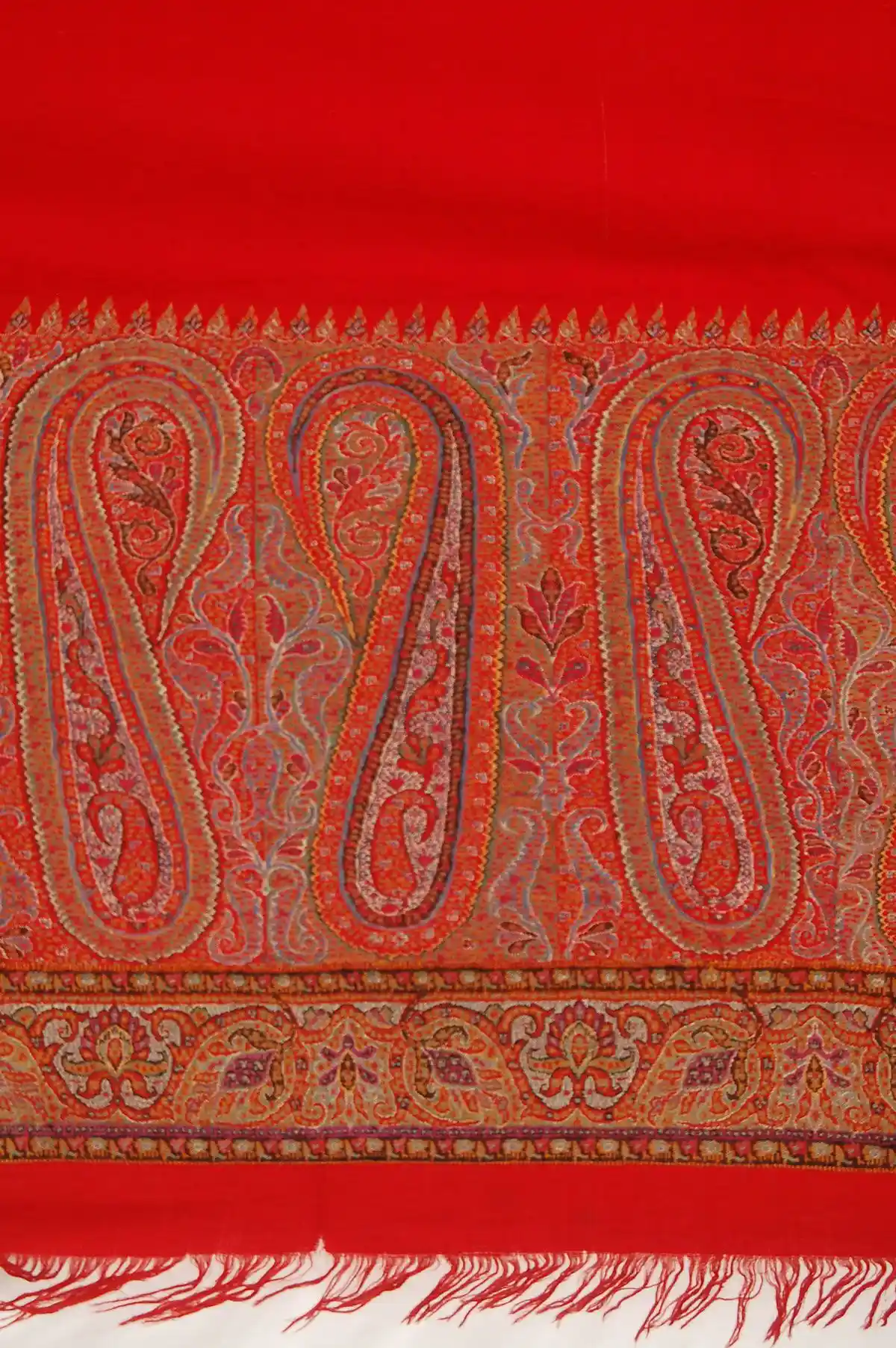The 'Fiber of the Kings': the charming finery of Kashmiri Shawl
The strands of the origins of Kashmiri Shawl’s story, speak volumes about why this fabric has gained the significance it has earned till date. From the silken threads of Pashmina to now banned Shahtoosh, the history of Kashmiri Shawl is as wonderful as any legend in the making.

A Kashmiri Shawl in all its glory, Source: Google Images
A woman steadily makes her way into a royal forest. Her streamlined body is draped with a single sheet with beautiful paisley prints and embroidery on it. She has run away from home and the only means of paying for her travels is the shawl draped around her sweaty body. Little did she know that she was nestled into luxury, carrying a single piece of garment that would provide not only for her passage to a strange land but also for a sufficient home and security for months. It was the era of the Mughals and the shawl was no ordinary shawl but a Kashmiri Shawl. A piece of wool that had the fortune of being titled the ‘Fiber of the Kings’.
Soft as silk and delicate as Fur but not as yet either, in both finery and rarity. When it comes to being the most precious and pure of all elements of the Indian textile, the etiquettes and grace of a Kashmiri Shawl leave every material behind, as it lightly steps into its elegant podium of being called a masterpiece.
It is marked as a symbol of prosperity and luxury in the contemporary world, often passed from one generation to another as a family heirloom until it becomes threadbare. It is gifted as a prize and a symbol of respect to famous personalities along with bouquets and trophies. Its finery is not flimsy, its light-weightiness should not be confused with cheapness, that’s the mystery and quality of a richly crafted Kashmiri Shawl, also known as the Cashmere shawl.
The history of the Kashmiri shawl and its origins are more interesting to know than its making process. As the rich properties required in the making of a Kashmiri shawl are attained frugally and in minority, its making is a task of utmost patience and care. The first ever Kashmiri Shawl is said to have originated in 1526, during the reign of Akbar. It was gifted to the Mughal Emperor as a mark of respect and greatness.
It is said that the Emperor, not aware of its significance, gifted the shawl to his Begums who adored the fine shawl in the safe space of their harems. Till the 18th century, these shawls were mostly worn by men, with kings gifting them to their favorite courtiers in the Durbar, as a symbol of elevation of their status. It was in the 19th century that women popularly start draping the shawl in public, hence accepting the shawl and making it a unisex garment.
The Kashmiri Shawl’s charm was not unknown and unfelt by the foreign lands as well. It is said that Ceaser adored his Kashmiri Shawl and loved to drape it almost all the time. Queen Victoria, who for a significant time was ‘The Empress of India’, felt a profound love for her beautiful Pashmina and Cashmere Shawls along with the Afghani carpets. Shawls used to be specially designed and dispatched to her Royal highness at her behest. Further deep into Europe, Marie Antoinette and Empress Josephine also became immense admirers of the fineness of the choicest Cashmere shawl.
But is it the inescapable allure in this fabric? Just because it is from Kashmir and everything from ‘the Heaven on earth’ ought to be distinguishing and brilliant? Well, it might be true, but Kashmiri Shawl is much more than that.
Kashmiri Shawl is of two types, the commonly known Pashmina Shawl is made with the inner lining of the hair of Changthangi goats. The other is the Shahtoosh Shawls, which are banned in the country because they require the hair of the Tibetan antelope which has become an endangered species.
Hence, most of the Kashmiri shawls found are Pashmina. The word Pashmina is made from the word, ‘Pashm’, which is the inner lining of the hair of a mountain goat, which inhabits the hills of Nepal, between India and Tibet. It is considered that for the wool to be of the finest quality, it should be from the highest altitudes. The Changthangi goats live at the height of 15000 ft and provide the choicest quality of warm and light wool required for the craft of making a splendid Pashmina shawl. The thickness determines the fineness of the Pashmina which rounds off to be 12-16 microns.
It takes a skilled weaver to complete seven shawls a day. Nonetheless, time is of the essence to nurture every art, and so on average, it takes around 200 hours to make one Kashmiri shawl. Slow yet splendid, would be anyone’s words when one beholds the richness and sheer luxury a Kashmiri shawl holds on the beholder.
Kashmiri shawl is another of the jewels embedded which makes India a culturally rich country in both art and economics. The traditional Kashmir weavers earn their bread and butter through the flair of their art. Their melting art is the fine piece of fabric which is the Kashmiri shawl, when embroidered alongside silk, enhances both the beauty and value of the fabric.
Today, as like the day when it first came into existence, to possess a Kashmiri shawl is to be prosperous, to hold luxury under one’s roof, to pass from one hand to another, blessing others with respect and a touch of finery.

A Pashmina Goat(Changthangi Goat), Source: Google Images


